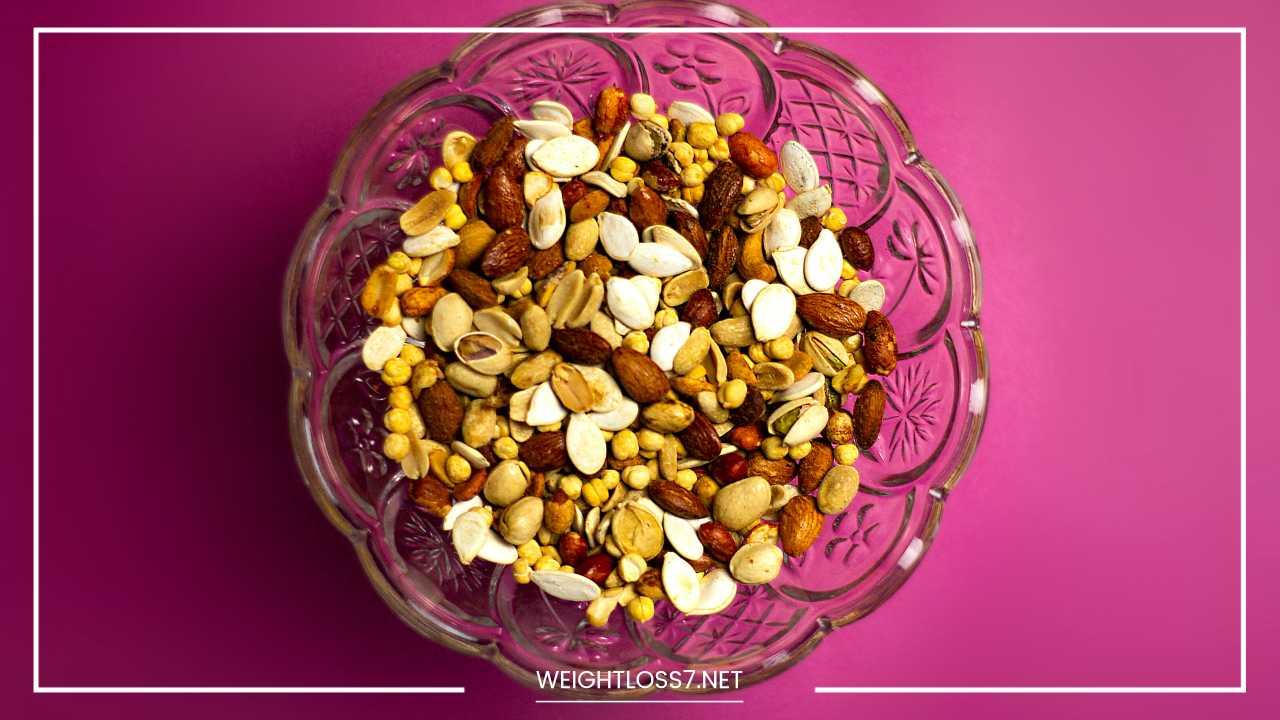Fasting for Weight Loss: Benefits, Methods & What to Know

Fasting for Weight Loss
Fasting For Weight Loss: A Comprehensive Guide for Beginners
Fasting, the practice of abstaining from all or certain foods and drinks for a set period, has transcended its historical roots in religious and spiritual traditions. Today, it’s a popular weight-loss strategy with a growing body of research to support its effectiveness.
But before diving headfirst into a fasting regimen, it’s crucial to understand its different methods, potential benefits, and essential considerations for beginners. This comprehensive guide will equip you with the knowledge you need to determine if fasting is the right approach for your weight-loss journey.
Unveiling the Science Behind Fasting
During a fast, your body undergoes a fascinating metabolic switch. Initially, it burns readily available glucose (sugar) from food for energy. This readily available source lasts for around 12-24 hours, depending on your last meal and activity level.
Once glucose stores are depleted, your body enters a metabolic state called ketosis. In ketosis, the liver starts converting stored fat into ketones, an alternative energy source.
This shift from burning glucose to ketones is a key physiological adaptation that can contribute to weight loss.
Understanding the Stages of Fasting:
- Pre-Fasting State: Your body burns glucose for energy, obtained from your most recent meal.
- Early Fasting Window (0-12 hours): Glucose stores begin to deplete, and your body starts relying more on stored glycogen (another form of glucose) for energy.
- Transitional Phase (12-24 hours): Glycogen stores become significantly diminished, triggering the release of glucagon, a hormone that signals the liver to convert fat into ketones.
- Ketosis (24+ hours): The body primarily uses ketones for energy, entering a state of ketosis.
Exploring the Diverse Landscape of Intermittent Fasting
Intermittent fasting (IF) is an umbrella term for various eating patterns that cycle between periods of eating and fasting. Here’s a closer look at some popular IF methods:
-
16/8 Method: This widely adopted approach restricts your eating window to 8 hours and requires fasting for the remaining 16 hours. You have the flexibility to choose when your 8-hour window falls within your day. A common practice is to skip breakfast and eat lunch around noon, finishing dinner by 8 pm.
-
5:2 Diet: This method allows you to eat normally for five days of the week. On the remaining two non-consecutive days, you restrict your calorie intake to 500-600 calories. These “fasting days” can be a full 24-hour fast or spread out throughout the day with small, calorie-controlled meals.
-
Eat-Stop-Eat: This method involves a 24-hour fast once or twice a week. For example, you could stop eating after dinner one day and resume eating after dinner the next day. 24-hour fasts can be challenging for beginners, so it’s advisable to work your way up to this duration.
-
Alternate-Day Fasting: This approach involves alternating days of regular eating with days of restricted calorie intake (around 500 calories). It’s important to ensure the restricted-calorie days provide adequate nutrients.
These are just a few examples, and there are other variations of IF protocols like the Warrior Diet or the OMAD (One Meal A Day) approach. The optimal method for you depends on your lifestyle, preferences, and overall health.
Unveiling the Potential Benefits of Fasting for Weight Loss
Research suggests that IF can be an effective tool for weight loss Here’s how it might contribute to shedding those extra pounds:
-
Calorie Restriction: By limiting your eating window, you naturally consume fewer calories overall, which can lead to weight loss.
-
Increased Fat Burning: During fasting, your body taps into stored fat for energy, potentially accelerating fat loss compared to a traditional calorie-restricted diet. Studies have shown that IF can be as effective for weight loss as continuous calorie restriction.
-
Improved Insulin Sensitivity: Studies suggest that IF may improve insulin sensitivity, a hormone that helps regulate blood sugar levels. This can be beneficial for weight management and overall health.
-
Reduced Inflammation: Fasting may decrease inflammation in the body, which is linked to various health conditions, including obesity. While the exact mechanisms are still being studied, some theories suggest that fasting may lower levels of inflammatory markers like C-reactive protein (CRP).
-
Appetite Regulation: Certain fasting methods, like the 16/8 method, may help regulate appetite hormones like leptin and ghrelin. Leptin signals satiety (feeling full), while ghrelin stimulates hunger. By compressing your eating window, you potentially allow your body to experience a prolonged state of leptin dominance, which can contribute to reduced hunger pangs and overall calorie intake.
Fasting for Weight Loss: Considerations and Cautions for Beginners
Before embarking on any fasting regimen, especially if you have underlying health conditions, consulting your doctor is crucial.
They can help you determine if fasting is safe for you and recommend an approach that aligns with your individual needs. Here are some additional key points for beginners to consider:
-
Start Gradually: Don’t jump straight into long fasting windows. Begin with shorter fasting periods, like 12 hours, and gradually increase the duration as your body adjusts. Listen to your body and adjust the pace accordingly.
-
Prioritize Hydration: Dehydration can be a concern during fasting periods. Make sure to drink plenty of water, unsweetened black coffee, or herbal tea to stay hydrated. Avoid sugary drinks or artificial sweeteners, which can break your fast and disrupt the metabolic switch.
-
Nutrient-Rich Foods are Key: During your eating window, focus on whole, unprocessed foods like fruits, vegetables, lean proteins, and whole grains. This ensures your body receives the essential nutrients it needs to function optimally. Avoid processed foods, sugary drinks, and excessive saturated and unhealthy fats, which can negate the potential benefits of fasting.
-
Listen to Your Body: Fasting should not be a test of willpower. Pay close attention to hunger cues. If you experience extreme hunger, dizziness, or fatigue, break your fast and consult your doctor. There’s no shame in adjusting your approach based on how you feel.
-
Fasting is Not a Quick Fix: It’s important to remember that fasting is not a magic bullet for weight loss. Sustainable weight management requires a holistic approach. Combine fasting with a healthy diet that emphasizes whole foods and regular exercise for optimal results. Here are some additional considerations:
-
Pregnancy and Breastfeeding: Fasting is not recommended for pregnant or breastfeeding women due to increased nutritional needs for themselves and the developing baby.
-
Certain Medications: Some medications may interact with fasting. Discuss your fasting plans with your doctor if you take medication to ensure it won’t cause any complications.
-
Underlying Health Conditions: People with diabetes, eating disorders, or other health conditions should consult their doctor before attempting to fast. Certain conditions may require specific dietary modifications or make fasting inadvisable.
Breaking Your Fast and Maintaining Weight Loss Success
The way you break your fast is just as important as the fasting period itself. Here are some tips for a smooth transition:
-
Start Slow: Don’t overload your digestive system after a fast. Begin with easily digestible foods like fruits, vegetables, yogurt, or bone broth. These are gentle on your stomach and provide essential nutrients.
-
Focus on Nutrient Content: Gradually reintroduce other food groups, prioritizing whole grains, lean proteins, and healthy fats. This ensures your body receives the necessary building blocks for repair and function.
-
Mindful Eating: Practice mindful eating during your eating window. Pay attention to hunger and satiety cues to avoid overeating. Savor your food and chew thoroughly to promote better digestion and absorption of nutrients.
Maintaining weight loss after fasting requires a commitment to a healthy lifestyle. Here are some strategies to help you stay on track:
-
Develop Sustainable Habits: Focus on creating healthy eating patterns you can maintain in the long term, not just during your fasting periods. Explore different healthy recipes and find ways to incorporate fruits, vegetables, and whole grains into your diet in a way you enjoy.
-
Portion Control: Practice mindful eating and portion control to avoid overeating during your eating windows. Use smaller plates, measure out portions, and avoid distractions while eating.
-
Regular Exercise: Combine fasting with regular physical activity for optimal weight management and overall health. Aim for at least 150 minutes of moderate-intensity exercise or 75 minutes of vigorous-intensity exercise per week. Strength training is also crucial for building muscle mass, which can further boost your metabolism.
Conclusion: Fasting as a Tool for Weight Loss and Overall Health
Fasting can be a valuable tool for weight loss, but it’s not a one-size-fits-all approach. If you’re considering trying IF, consult your doctor and choose a method that aligns with your lifestyle and health goals.
Remember, fasting is most effective when combined with a healthy diet that emphasizes whole foods and regular exercise.
By adopting a holistic approach to weight management, you can achieve lasting results and improve your overall well-being.
Additional Resources:
- National Institutes of Health (NIH): https://www.niddk.nih.gov/health-information/weight-management/adult-overweight-obesity
- Mayo Clinic: https://www.hopkinsmedicine.org/health/wellness-and-prevention/intermittent-fasting-what-is-it-and-how-does-it-work
- Obesity Society: https://www.obesity.org/
This comprehensive guide has equipped you with the knowledge to make informed decisions about incorporating fasting into your weight-loss journey. Remember, consistency and a focus on overall health are key to achieving your goals!

















